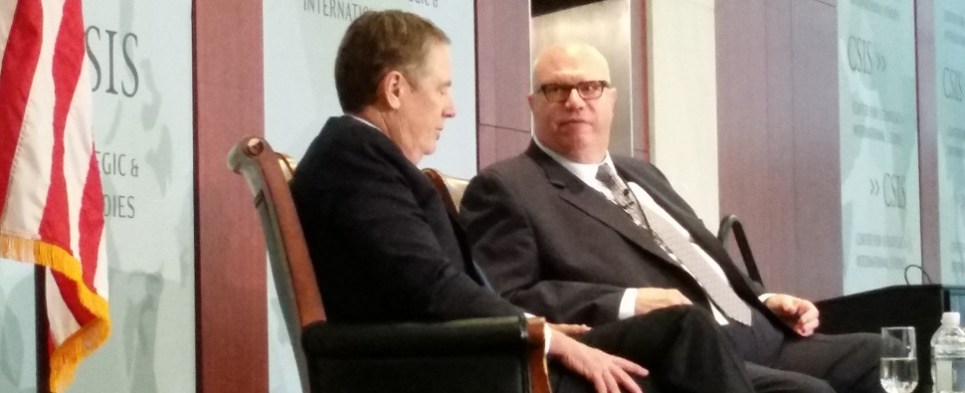Making Sense of Trump’s Trade Policy
When United States Trade Representative Robert Lighthizer presents the Trump administration’s trade policy, you don’t have to agree with it. But at least he makes some sort of sense.
Here’s what President Donald Trump had to say about a prominent trade issue, in a recent tweet:
We are in the NAFTA (worst trade deal ever made) renegotiation process with Mexico & Canada.Both being very difficult,may have to terminate?
— Donald J. Trump (@realDonaldTrump) August 27, 2017
It’s become a truism among US political pundits. The president tweets about North Korea, but Secretary of Defense James Mattis articulates US policy. Trump fulminates about US allies and adversaries, and Secretary of State Rex Tillerson speaks in more measured tones. Trump issues non sequiturs about trade and the USTR explains the administration policy rationally.
“The big challenge facing the world trading is China,” Lighthizer told an audience at the Center for Strategic and International Studies this week. “The scale of China’s coordinated effort to develop its economic system has been unprecedented.”
It’s not as if the US doesn’t want to use World Trade Organization mechanism to redress issues. The problem, according to Lighthizer, is that “the WTO and the GATT [General Agreement on Tariffs and Trade] were not designed to combat mercantilism on this scale.”
Lighthizer’s nomination came under fire when it was put forward by Trump in the early days of the administration. Among other problems, Lighthizer represented the trade interests of China and other foreign countries as an attorney in private practice over three decades, requiring that the US Senate waive the usual ethics rules. But he is no stranger to trade policy: he served as Deputy USTR during the Reagan Administration after occupying a staff position on the Senate Finance Committee.
“Many decisions under WTO dispute resolution are indefensible,” Lighthizer told the CSIS audience.
But that doesn’t mean the US won’t resort to the WTO to assert its own interests. The USTR recently undertook an investigation of China’s intellectual property practices, under Section 301 of the Trade Act.
“Section 301 is the tool we have to investigate,” he explained. “If we find WTO violations we will bring it there as well.”
But Lighthhizer’s biggest theme, like Trump, is to draw distinctions between the policies of the current administration and its predecessors. The Obama administration sought a multilateral trade deal in the Asia-Pacific region, in the form of the Trans-Pacific Partnership, in part to restrict China’s maneuverability and to encourage that county to accept a US-led trade regime in the region in the long run. Trump scrapped that agreement almost on Day One.
“The president prefers bilateral agreements,” Lighthizer explained. “We can get better results from negotiations and they are easier to enforce.”
But the administration is in no rush to negotiate a bilateral trade agreement with the United Kingdom. Although Lighthizer has met with US trade minister Liam Fox, he added that the US will enter into trade talk with the UK “at the appropriate time. That process is a year or two off.”
Meanwhile, the administration will continue to focus on redressing trade deficits with US trading partners. The premise is that the US will do well in a truly free and fair trading system and that trade deficits, somehow, are a symptom of a lack of fairness. (Many economists would disagree.)
“Most of us would agree that we should let markets determine outcomes,” Lighthizer told the CSIS audience, “but many markets are not free or fair. The question is how do we get to efficient markets.”
On deficits, “It’s reasonable to ask whether the rules of trade are part of the problem,” said Lighthizer. “It’s reasonable to ask whether what we pay and what we receive in these agreements are roughly equivalent.”





Leave a Reply